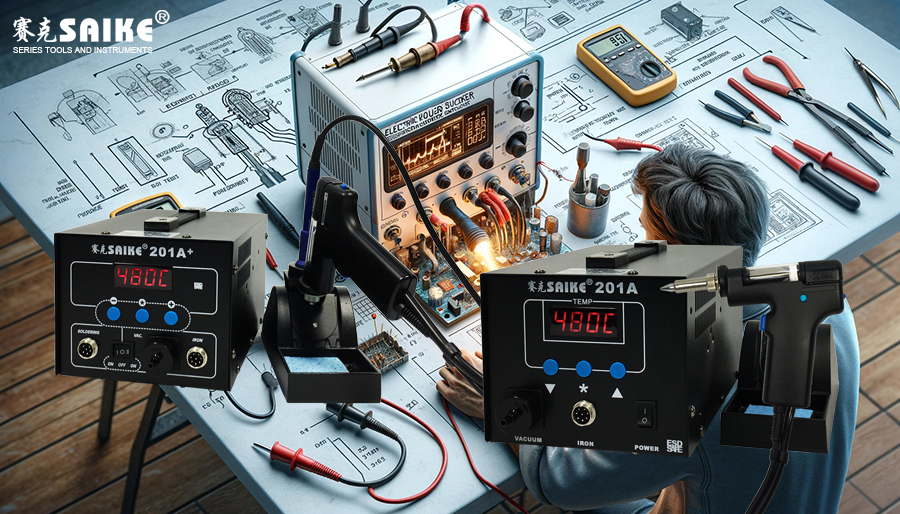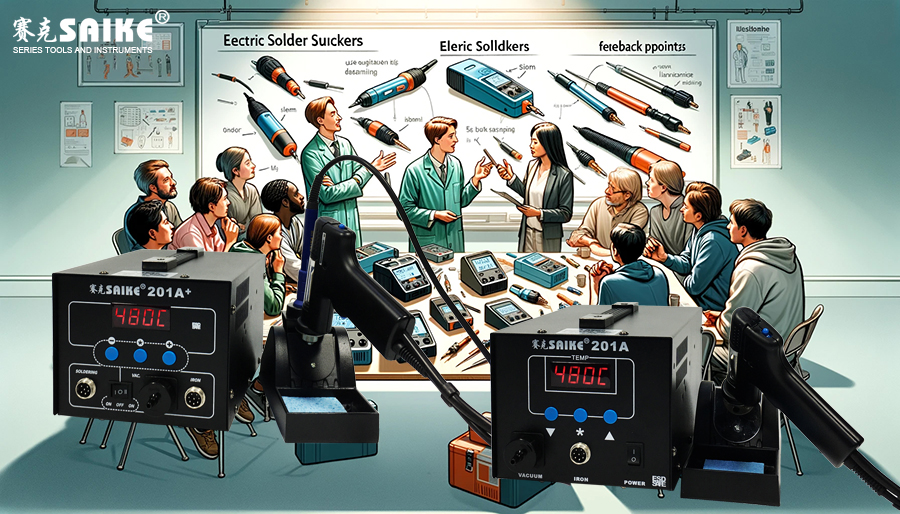
SK-YJ000DDXXQ-KP 100014
Electric solder suckers are commonly used tools in electronic maintenance, but some faults may occur during use. Mastering the correct troubleshooting process and identifying common fault types are crucial for quickly restoring the normal operation of the equipment. This article will introduce the troubleshooting process of electric solder suckers, as well as the types and identification methods of common faults.
I. Troubleshooting Process
1.Initial Observation:
– Check if the power cord, plug, and switch are damaged or abnormal.
– Confirm that the equipment is correctly connected to the power supply and try to turn it on.
2.Function Test:
– Check if the solder sucker can normally heat up and suck solder.
– Observe if the heating indicator light or display screen is working properly.
3.Fault Localization:
– Determine through the above inspections that the problem may lie in the heating system, soldering system, or power management system.
4.Detailed Inspection and Testing:
– Use a multimeter to check the connectivity of the power cord and switch.
– Inspect the working status of the heating element and temperature controller.
– Check if the soldering pump or fan is operating normally.
5.Problem Solving:
– Perform corresponding repairs or replace damaged parts based on the inspection results.
II. Common Fault Types and Identification
1.Heating Not Working:
– Fault Manifestation: The heating light is not on, and the hot tip is not hot.
– Possible Reasons: Power failure, damaged heating element, or temperature controller failure.
– Diagnostic Method: Check the power connection and test the heating element and temperature controller with a multimeter.
2.Insufficient Suction:
– Fault Manifestation: After the solder melts, the solder sucker cannot effectively suck away the melted solder.
– Possible Reasons: Clogged suction nozzle, vacuum pump, or fan failure.
– Diagnostic Method: Clean or replace the suction nozzle and check the operation of the vacuum pump or fan.
3.Power Issues:
– Fault Manifestation: The switch has no response, and the whole machine does not work.
– Possible Reasons: Damaged power cord, switch failure, or internal open circuit.
– Diagnostic Method: Check the integrity and function of the power cord and switch.
4.Unstable Temperature Control:
– Fault Manifestation: After setting the temperature, the actual temperature fluctuates greatly.
– Possible Reasons: Temperature controller failure, environmental temperature influence, or aging of the heating element.
– Diagnostic Method: Check the temperature control system and try to test the temperature stability at different ambient temperatures.
III. Summary
Effective troubleshooting and timely maintenance of electric solder suckers are the keys to ensuring efficient equipment operation. Through a systematic troubleshooting process, the cause of the fault can be quickly and accurately identified, and appropriate measures can be taken for repair. This not only improves maintenance efficiency but also extends the service life of the equipment. Operators should regularly inspect and maintain the equipment to prevent possible faults.


